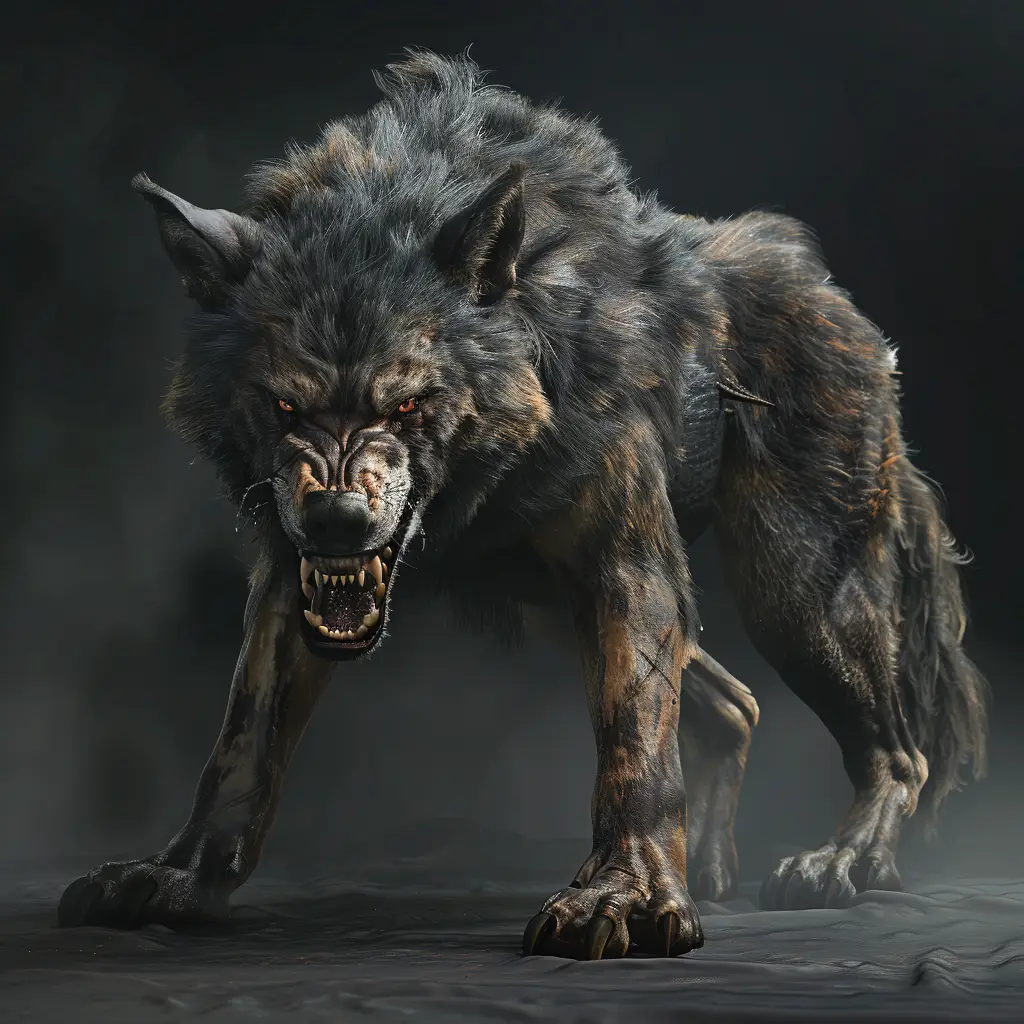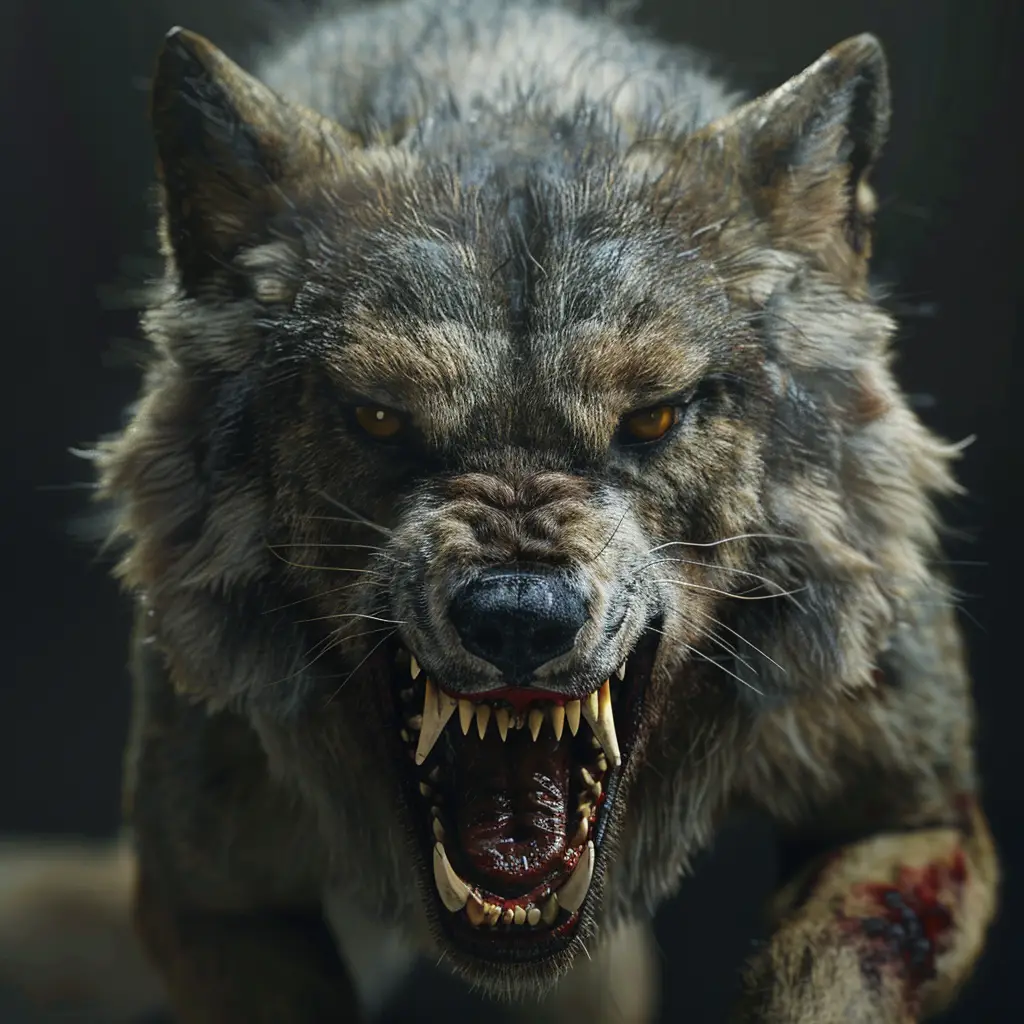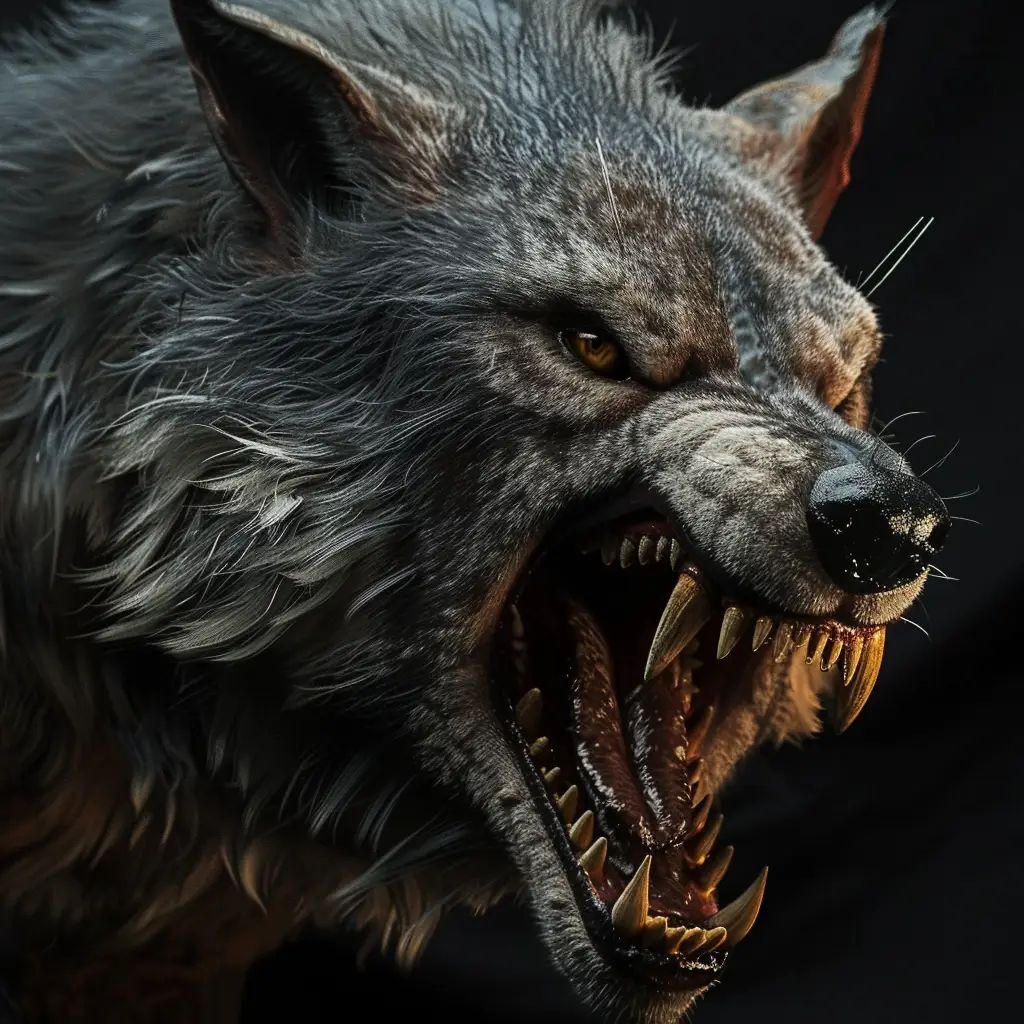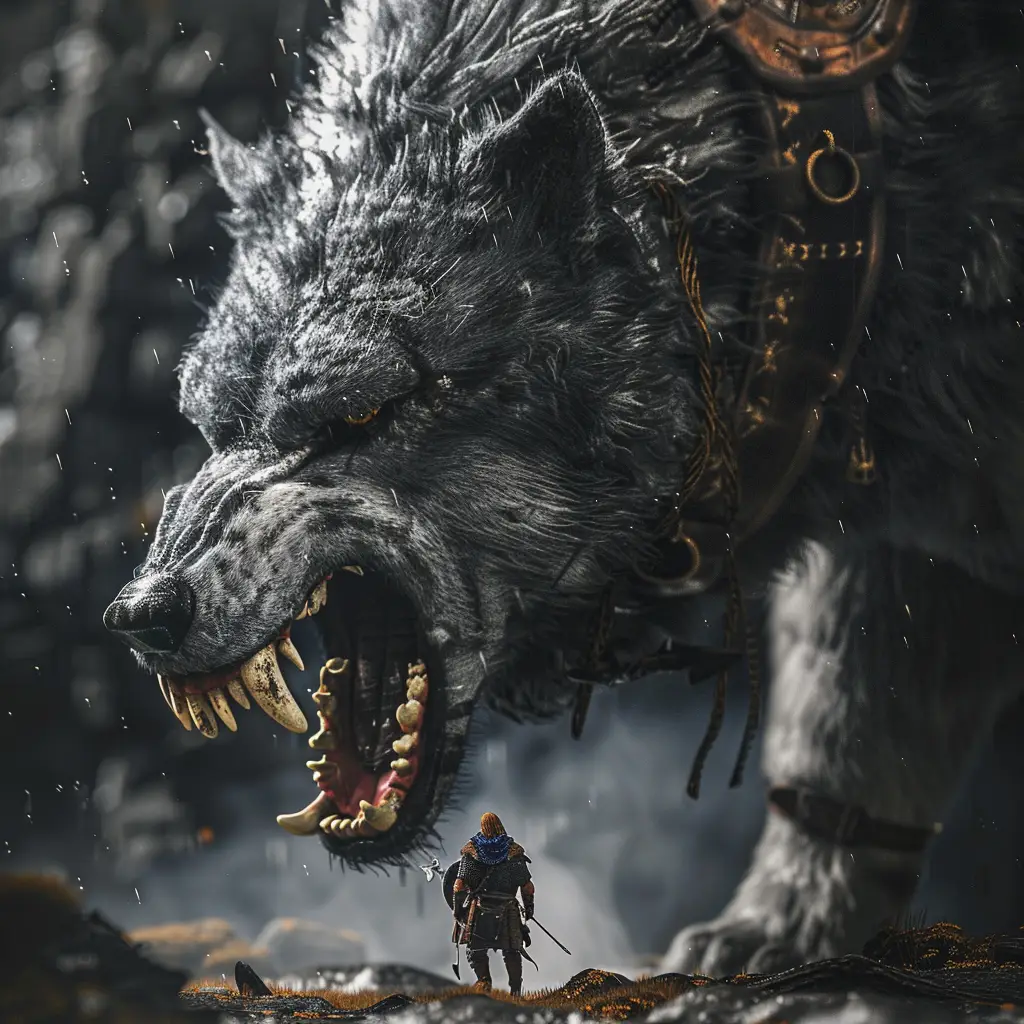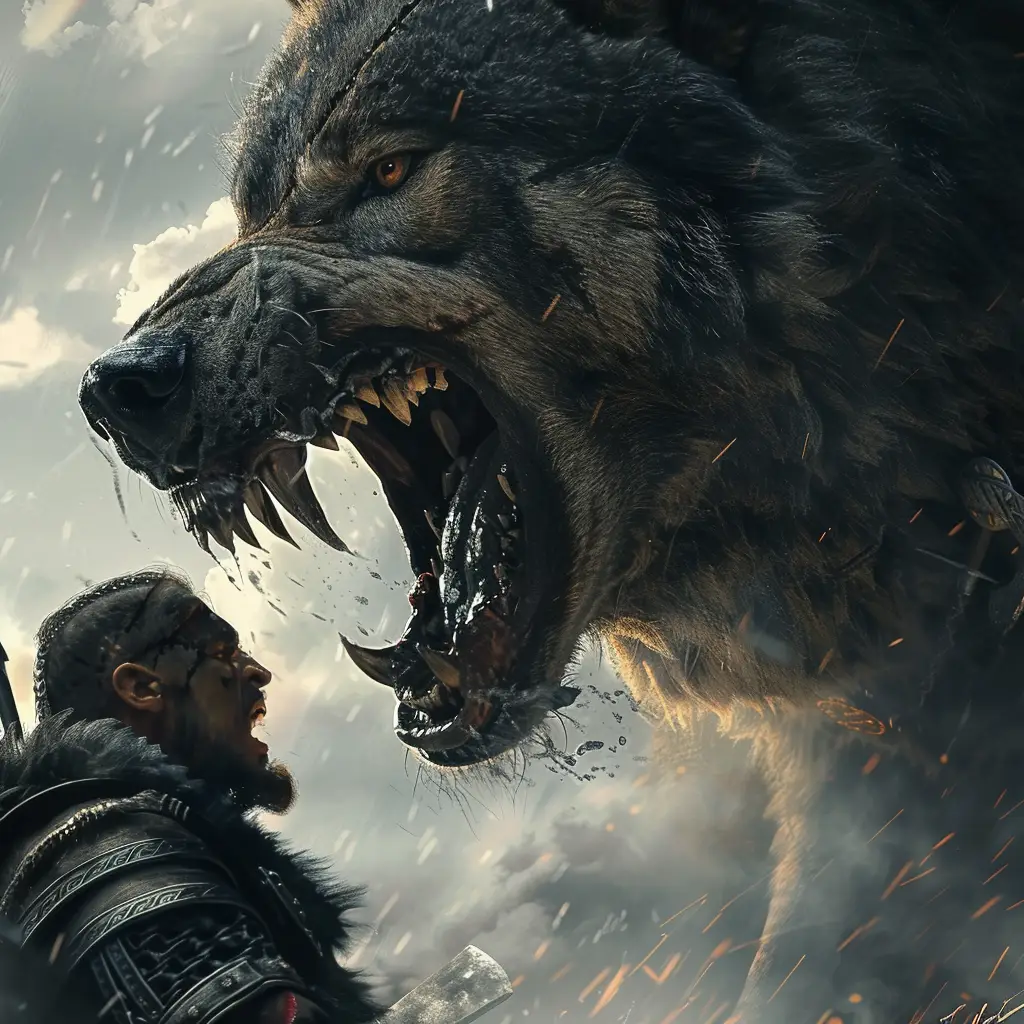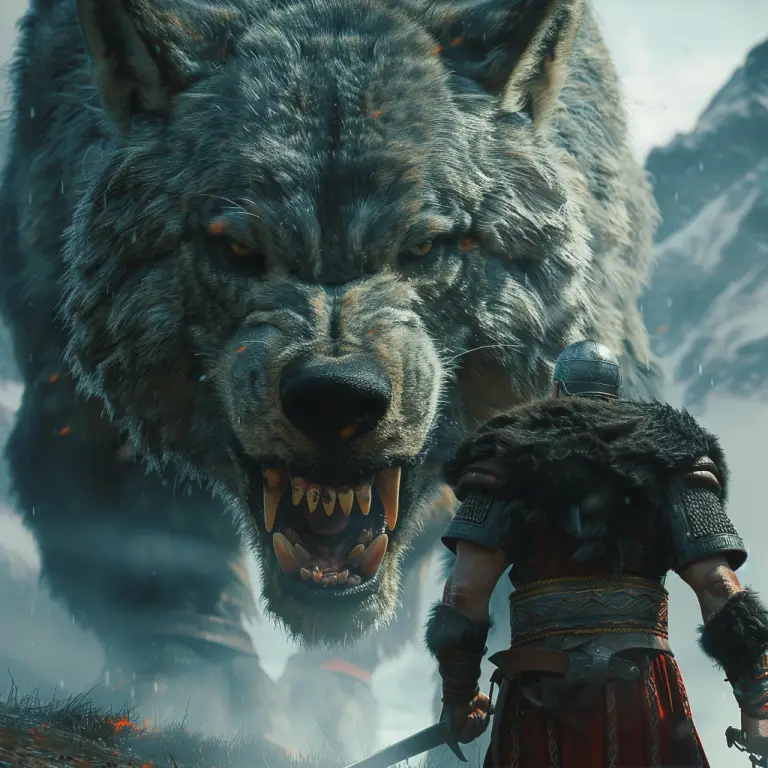Fenrir is one of the most iconic and fearsome creatures in Norse mythology. Known as a giant wolf, Fenrir is a key figure in the myths surrounding the end of the world, or Ragnarök. His story is filled with themes of prophecy, inevitability, and the tension between the gods and the forces of chaos.
Origins and Family
Parentage: Fenrir is one of the three monstrous offspring of Loki, the trickster god, and the giantess Angrboða. His siblings are Jörmungandr, the Midgard Serpent, and Hel, the ruler of the underworld.
Early Life: Fenrir’s growth and strength were so alarming that the gods of Asgard decided to chain him to prevent the foretold destruction he was prophesied to cause. The gods raised him in Asgard, but as he grew, they realized they could not control him.
Binding of Fenrir
Attempts to Chain: The gods attempted several times to bind Fenrir with different chains, but each time he broke free. Finally, they enlisted the dwarves to craft a magical ribbon called Gleipnir, made from impossible things like the sound of a cat’s footfall and the breath of a fish.
Deception and Binding: The gods tricked Fenrir into being bound by Gleipnir, promising it was just a test of his strength and that they would release him if he couldn’t break free. Fenrir agreed, but only if one of the gods placed a hand in his mouth as a sign of good faith. Tyr, the god of war, bravely volunteered and placed his hand in Fenrir’s mouth. When Fenrir realized he could not break free, he bit off Tyr’s hand in rage.
Imprisonment: Bound by Gleipnir, Fenrir was chained to a rock with a sword placed in his mouth to keep it open, and he remained there until the events of Ragnarök.
Prophecy and Ragnarök
Role in Ragnarök: According to the prophecies, Fenrir will play a pivotal role in Ragnarök, the apocalyptic battle at the end of the world. He is fated to break free from his bonds when the world ends, joining the forces of chaos against the gods.
The Battle: During Ragnarök, Fenrir will devour Odin, the Allfather, symbolizing the ultimate defeat of the old order. Odin’s son, Víðarr, is prophesied to avenge his father by slaying Fenrir, either by tearing his jaws apart or stabbing him in the heart.
Symbolism: Fenrir’s role in Ragnarök represents the inevitability of fate and the cyclic nature of destruction and rebirth in Norse mythology. His presence signifies the power of chaos and the unavoidable doom that even the gods cannot escape.
Symbolism and Interpretation
Chaos and Wildness: Fenrir embodies the wild and uncontrollable forces of nature. His presence in the myths underscores the theme that not all threats can be contained or controlled, and some things are destined to bring about change through destruction.
Prophecy and Fate: The binding and eventual release of Fenrir highlight the Norse belief in predestination. The gods’ attempts to avoid their fate ultimately lead to the fulfilment of the prophecy, reflecting the futility of trying to escape destiny.
Duality of Creation and Destruction: Fenrir’s narrative also reflects the balance between creation and destruction, a recurring theme in Norse mythology. His existence as a force of chaos is necessary for the renewal that follows Ragnarök.
Fenrir in Modern Culture
Literature and Media: Fenrir has appeared in various forms in modern literature, movies, and games. He is often depicted as a massive, terrifying wolf, sometimes with ties to themes of rebellion and the primal nature of life.
Popular Culture: Fenrir’s imagery has been used in a wide range of contexts, from fantasy stories to video games, symbolizing the power and terror of the wild. Examples include his portrayal in the God of War series and the Thor comics and movies by Marvel.
Influence on Symbolism: The story of Fenrir continues to influence modern interpretations of wolves and chaos in mythology, often representing the untamed and destructive aspects of nature that lie beyond human control.
In a nutshell
Fenrir remains a potent symbol of chaos and destruction in Norse mythology. His story, marked by themes of prophecy, inevitability, and the balance between order and chaos, reflects the deep and complex worldview of the Norse. The tale of Fenrir’s eventual role in Ragnarök serves as a reminder of the cyclical nature of existence and the unbreakable bonds of fate.
